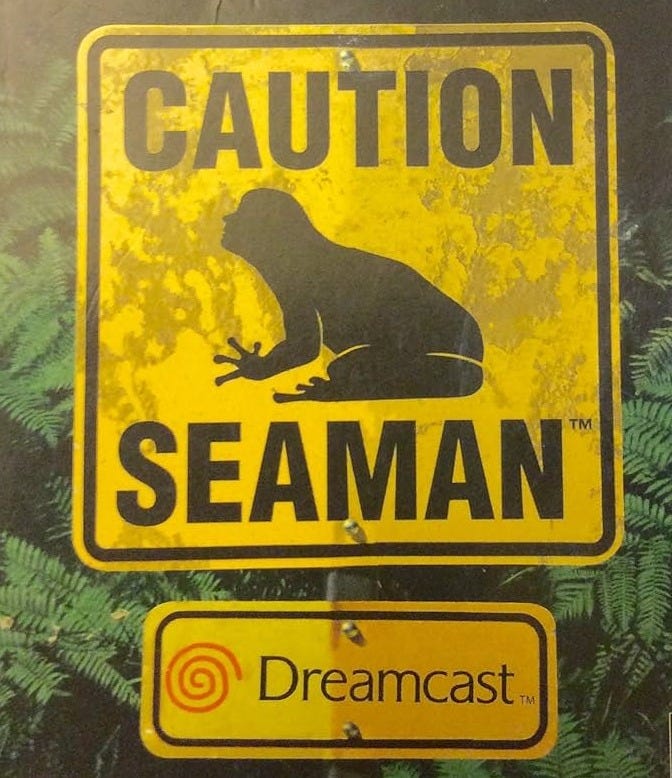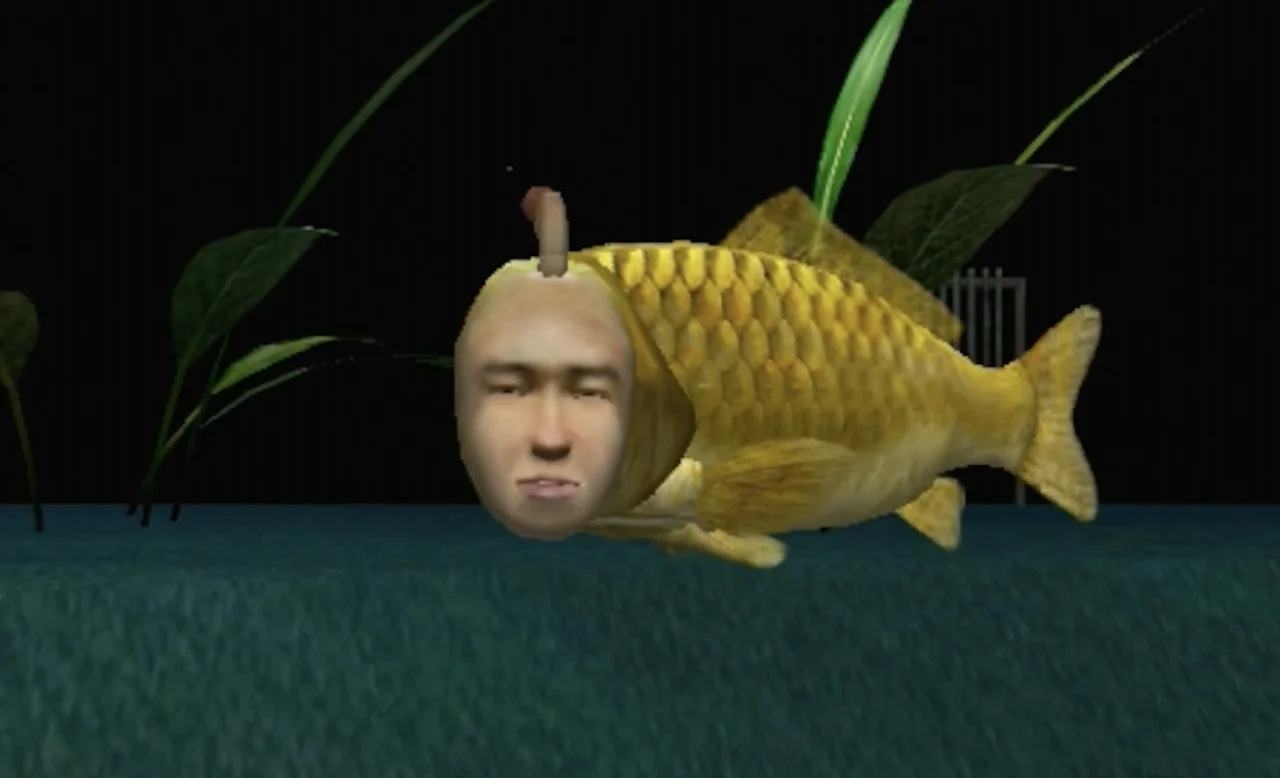The Cursed AI Dreamcast Game That Had Teenagers Yelling At Leonard Nimoy
SeaMan (2000) taught you more about sex than your middle school's sex ed class
It’s the year 2000. Games like Pokémon Gold/Silver, The Legend of Zelda: Majora’s Mask, and The Sims are making waves, celebrated by gamers everywhere. The video game industry, which clawed its way back from the brink in the late ’80s, has grown into a global juggernaut in the ’90s, putting consoles in nearly every middle-class household. But as we enter a new millennium, a fascinating trend emerges: mature gaming. Titles like Resident Evil (1996), Grand Theft Auto (1997), and Metal Gear Solid (1998) prove you don’t need a colorful, cartoonish plumber to sell millions of copies.
Meanwhile, unbeknownst to most Western gamers, Japanese game designer Yoot Saito is busy cooking up something truly bizarre for the Sega Dreamcast. Saito, known for his unconventional approach to game design, had already created one of my favorite games of all time, SimTower (1994). If you had it on your clunky Mac or PC, you’ll remember the addictive satisfaction of building ever upward.
By the late ’90s, Saito had shifted his obsession in an entirely new direction: creating a game that replicated the experience of nurturing and caring for a living being. The success of Tamagotchi had already proven that people were drawn to raising virtual creatures, but Saito wasn’t interested in just mimicking that formula. He wanted to go deeper—exploring the relationship between player and character using one groundbreaking feature: the Dreamcast microphone.
At first glance, this might sound like standard fare. But Saito was bored with conventional gaming. He wanted players to really think—about communication, about life. And that’s where things got interesting.
The creature players would “nurture” was no ordinary pet. Enter SeaMan, a fish-to-frog creature with evolutionary stages and a distinctly human face. Using cutting-edge AI (for the time), SeaMan would not only remember conversations but adapt its dialogue as it learned from you, creating interactions that, frankly, rival some internet chatbots 24 years later. But the pièce de résistance? SeaMan’s personality.
Unlike your average virtual pet, SeaMan was sarcastic, antagonistic, and bitingly witty. And who better to deliver this dry, acerbic tone than Leonard Nimoy? Leonard ultimately did not voice the creation but the narration of the game.
If you messed up, SeaMan would let you know:
“You’re not very good at this, are you?”
Didn’t meet its culinary expectations?
“Why are you feeding me this garbage?”
Feeling philosophical?
“Humans think they are so special.”
SeaMan’s personality made it a one-of-a-kind experience. Who wants to talk to a cuddly kitten that says generic, sugary phrases? (Okay, fine, most people probably would.) But a fish with a human face that can discuss the atrocities of war? Now that’s interesting.
And discuss atrocities you did. More teenagers screamed unspeakable horrors into that microphone than Alex Jones ever yelled at his audience. Asking a frog-faced SeaMan about reproduction or why you can’t get a girlfriend? “It might have something to do with your face,” it quipped. It was the kind of dark, bizarre interaction that fascinated every 12-year-old and horrified their parents.
SeaMan wasn’t just a game; it was an experience—equal parts surreal, hilarious, and unsettling.
Did you play it? What ungodly conversations did you have with SeaMan Nimoy? I’d love to hear your stories!
Want more gaming nostalgia?
This is just the beginning of my Substack. Subscribe for more articles like this and join a community of gamers exploring the strange, hilarious, and fascinating history of video games.







Omg I remember this game, hahaha! Good thing my parents never overheard me playing it 😶🫠